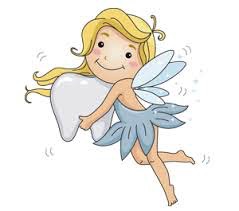The Tooth Fairy Tradition
You might be surprised to learn that every known culture has a tradition for disposing of children’s teeth, and the tooth fairy as we know her in America is only one of many. In many countries, baby teeth are actually given to a mouse or rat as a sacrifice with the hope that the child’s permanent teeth will grow to be as strong as a rodent’s. The fairies of European folklore and the fairies featured in many Disney films aided in the creation of today’s gift-bearing tooth fairy, who is only a very recent American tradition.
So what about the practice of placing teeth under the pillow? It is widely believed that this tradition comes from the European custom of burying baby teeth in the ground when they fall out to ensure the adult tooth grows in.
So what can you do as a parent to make this tradition special and unique to your family? We have a few ideas!
- Have the Tooth Fairy leave your child a special note or a certificate documenting the occasion.
- Make or purchase a special “tooth themed” pillow for your child to sleep on the nights they are awaiting a visit from the Tooth Fairy.
- If you’re worried the Tooth Fairy will be discovered when retrieving a tooth from under your child’s pillow, consider putting the tooth in a specially decorated jar next to their bed instead.
- Sprinkle some glitter around the room as proof of the visit.
When children lose their baby teeth, it can be a very exciting time for both children and parents. Make the most of it by incorporating your own fun traditions! Adding special touches to the experience will also help to dissipate any anxiety or fear your child might be feeling about losing their teeth.
If you have any questions or concerns on when children should lose their teeth and what is normal as they develop and grow, make sure to check out our blog post on baby teeth or contact one of our doctors.





